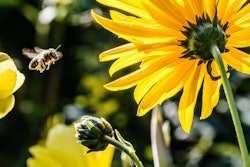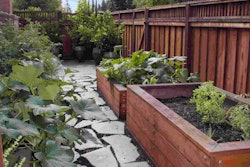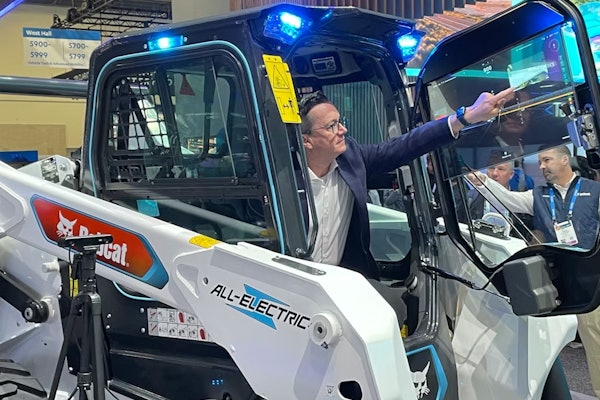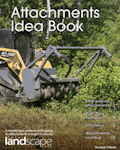Low-maintenance plants are an ever-popular request, as clients who don’t have much free time are looking for garden oases that don’t require much upkeep.
Thankfully, many homeowners have come to realize that low-maintenance plants certainly do not mean no maintenance.
“I do think that growers are doing a good job of not over-promising when it comes to the routine care of their plants,” says Kate Karam, editorial director for Monrovia. “Interest in gardening is increasing exponentially every year and with more experience (and passion for the activity), I think the expectation that plants are essentially living plastic that needs no care has lessened.”
“I think people are starting to get it,” says Jane Beggs-Joles, a landscape program manager with Proven Winners. “They see that even the 30-minute dinner on Pinterest involves cutting up some vegetables, so I think they can appreciate that a plant might need a little basic maintenance. It’s an opportunity to talk to the client and show off your knowledge so they’re confident that they’ve hired a professional.”
While annuals and perennials offer color and variety and trees provide shade and height to a design, shrubs help keep a landscape grounded. Shrubs tend to serve as visual anchors in the landscape, so it makes sense that you’d particularly want to pick sturdy options for your customers that won’t be too needy in the long run.
What makes a shrub low-maintenance?
Whether your customers realize it or not, shrubs are one of the first things they focus on because these plants are at eye-level. They can bridge the space between low-growing perennials and taller trees.
So, when a customer says they want a low-maintenance shrub, here are some of the traits to look for when perusing plant material for their project. Look for shrubs that have improved resistance to diseases, can tolerate weather extremes such as drought and are self-cleaning if they flower.
“Compact size is also desirable – pruning to keep something small takes time,” Beggs-Joles says. “Why not avoid that extra work by planting something that stays small?”
Karam adds that in a perfect world, these shrubs should also offer year-round interest.
“All plants need care, water, food and at least some sunlight,” Karam says. “Those are non-negotiable. Realistically, the types of plants that have lesser ongoing needs still require you to plant them correctly, nurse them while they get established, feed them when they need it, add compost and mulch at least once a year to help keep them happy and attend to them when there are extremes such as prolonged drought or a late blast of freeze. What you can expect is that for the most part, if you do the above, they will sail through the season without much diva drama.”
Beggs-Joles also reminds landscapers that it ultimately comes down to the right plant and the right place.
“Low-maintenance plants won’t be that if you’ve put the wrong plant in the space,” she says.
What’s popular
Some of the popular shrubs that fit these descriptions include boxwood, spruce, junipers, laurels, lavender, rhododendrons, viburnums, lilacs, olives and bottlebrush.
“(There are) so many great shrubs out there that, once you get them in the ground and give them some time to root in, can be counted on to thrive even with a bit of neglect,” Karam says. “Always ask at your local garden center for their advice but be sure to be specific about what you mean by ‘low maintenance’, as one person’s easy care is another person’s lots of work!”
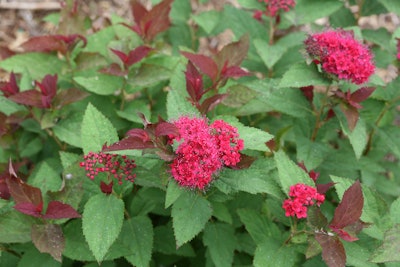 Double Play Doozie offers deep red foliage in the spring and bright purple-red flowers by late spring that continue through the summer.
Double Play Doozie offers deep red foliage in the spring and bright purple-red flowers by late spring that continue through the summer.Photo: Courtesy of Proven Winners – www.provenwinners.com
Some of Proven Winners’ popular low-maintenance shrub include the Low Scape Mound aronia and dwarf Invincibelle hydrangeas like Invincibelle Wee White.
“It’s a dwarf selection of the native Aronia melanocarpa, so it speaks to the demand for low-maintenance native plants yet is small enough to fit places that other selections wouldn’t,” Beggs-Joles says.
Landscapers can also expect to see a good number of Double Play Doozie spirea hit the market this year.
“This is a sterile spirea hybrid that reblooms without deadheading,” Beggs-Joles says. “So, you get that tough, deer-resistant spirea that flowers through the season with no work.”
As for Monrovia, Karam says to be on the lookout for new weigela, hydrangea, hawthorn and lilacs.
“So many improvements are being made to these treasured and already great plants,” Karam says. “Longer or repeat blooming, sturdier stems, improved depth of color. It’s a great time to be a plant!”
Misunderstood shrubs
Yet it’s important to not rule out certain plants that have been deemed too fussy in the past. Educate clients on how past failures might have been due to the wrong cultivar for the space or improper care.
“I think that roses get a bad rap,” Beggs-Joles says. “If you’re selecting good disease-resistant landscape roses grown on their own roots, you really don’t need to do much to them other than giving them water and sunshine.”
The Flower Carpet series of roses is an example of one of these more low-maintenance cultivars.
Camellias, gardenias and hydrangeas are all plants that Karam says should be given a chance to settle in before passing judgment.
“When they bloom, they’re so magical and worth it,” she says. “Same with hydrangeas – yes, they need water and some respite from afternoon sun, which makes them seem a bit fussy, but they’re not.”
Where to use them
These landscaping staples can create screens or barriers to parts of the yard. They can also accent prominent landscape features for framing or to add a little extra emphasis.
Karam suggests conifers as a sturdy option and Beggs-Joles says to opt for Hydrangea arborescens or H. paniculate over the popular H. macrophylla.
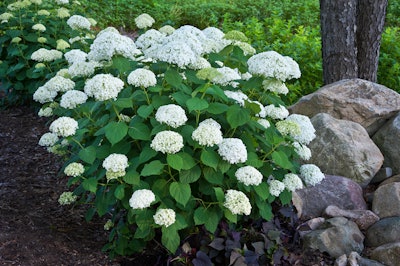 Incrediball hydrangea is an improved version of the classic ‘Annabell’ hydrangea.
Incrediball hydrangea is an improved version of the classic ‘Annabell’ hydrangea.Photo: Courtesy of Proven Winners – www.provenwinners.com
“A plant like Incrediball H. arborescens or Little Lime H. paniculata will flower even after harsh winters and you don’t need to worry about pruning at the wrong time or the soil affecting the flowers,” Beggs-Joles explains.
Shrubs can provide a number of uses in the landscape, including adding texture and color, serving as windbreaks or wildlife habitats. Selecting low-maintenance varieties simply adds to their effectiveness.
“What these plants afford is the opportunity to tackle those tough situations like slopes and hillsides, hell-strips, areas where it’s tough to get irrigation on a regular basis,” Karam says.
Beggs-Joles adds that low-maintenance shrubs free up landscapers’ time.
“Low-maintenance plants require less work so you can do more designing and planting,” she says. “They also open up some opportunities to plant something more interesting in a location that might be inconvenient for regular maintenance.”



